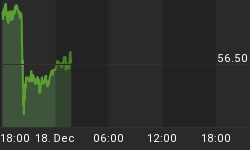In the waning trading sessions of 2005, the yield spread between the Treasury 10-year security and the Treasury 2-year security inverted slightly. That is, on some occasions, the yield on the 2-year was slightly above that on the 10-year. The inversion of this yield spread preceded the recessions of 1980, 1981, 1990 and 2001. A number of analysts, including Fed Chairman Greenspan, have said that it's different this time - a yield-curve inversion in the current environment does not have the same kind of future economic growth implications as in past cycles. In a December 19, 2005 commentary (http://www.northerntrust.com/library/econ_research/daily/us/dd121905.pdf), I noted that since 1966, a yield curve inversion (referring to the yield spread between the Treasury 10- year and the fed funds rate) seemed to be a necessary condition for a recession, but not a sufficient condition. That is, minor inversions did not necessarily signal the near-term onset of recession. Because the current spread between the 10-year and the 2-year is only slightly negative or only slightly positive, depending on what time of day you observe it, I am not now forecasting a recession in 2006 - an economic slowdown, yes, but not a recession.
Yet, I would not argue that it's different this time. Perhaps it is different this time, but it is not different because the economy was strong going into the yield curve inversion, as some seem to be arguing. The chart below shows that domestic final demand was very strong going into and even during part of the yield-curve inversion of 2000. On a quarterly-average basis, the yield spread between the Treasury 10-year and the Treasury 2-year first inverted in Q1:2000 and did not turn positive until Q1:2001. In Q4:1999, the quarter-to-quarter annualized growth in real final sales to domestic purchasers was 4.8%. In Q1:2000 and Q2:2000, the annualized growth rates in real final sales to domestic purchasers were 5.6% and 4.2%, respectively. In the next 11 quarters though, that is, through Q1:2003, the compound annual growth in real final sales to domestic purchasers was only 1.8%. Recall, that back in the first quarter of 2000, the yield curve was thought to be sending a false signal by many (including, embarrassingly, me) because of a shortage of long Treasury paper due to the cancellation of 30-year bond auctions because of federal budget surpluses as far as the eye could see. In other words, back in 2000, the yield-curve inversion also was thought to be different that time , too.

In Q3:2005, the annualized growth in real final sales to domestic purchasers was 4.5%. Now, because growth in real consumer expenditures in the fourth quarter will be lucky to be positive, I expect that growth in real finals sales to domestic purchasers in Q4:2005 will be considerably slower than in Q3. Moreover, I expect that a fundamental slowing in final domestic demand is in the offing for 2006. Why? Because that is what the current behavior of the yield curve, consistent with other leading indicators, is signaling about future domestic demand. Whether a recession is on the horizon may depend on how much more the yield curve inverts. Perhaps it's different this time. But it is not different because aggregate demand was strong just prior to the yield curve's inversion. The shape of the yield curve is a leading indicator. Don't be so quick to dismiss the signal of a leading indicator because of the message of a coincident one.
Note: The renaming contest is over. Although a number of good entries were received, in the opinion of the judges (me), the winning title was submitted by my wife of 38 years. Who better would know my manner of thinking? And the winning title is:
The Econtrarian
"Your alternative to the econsensus"
Those who submitted entries that were not chosen will have to change your email addresses if you want to get off the distribution list!
















